#article 351
Text
Incubateur jano
el 24 mode d'emploi
#http://vk.cc/c7jKeU#nofollow#<p> </p><p> </p><center>INCUBATEUR JANOEL 24 MODE D'EMPLOI >> <strong><u><a href= rel= target="_bl#<br> couveuse janoel 12janoel 12 notice en français#<br> janoel 24 pdf#<br> notice couveuse janoel 8-48#<br> couveuse janoel 24 avis#<br> incubator janoel 24#<br> couveuse janoel 24 prix#<br>#<br> </p><p> </p><p> </p><p>Notice de l'incubateur JANOEL24 traduite par moi donc susceptible de contenir de petites erreurs. Dan#11 ko)Téléchargé 351 fois#24 févr. 2018 - recte. (b) Utilisez la bonne quantié de fu- migant. Incubator janoel 24 : Guide d utilisation Incubateur Article 50036 WilT#À ce stade#il est important que vous fassiez preuve de patience et de laisser les poussins nouvellement éclos dans la couveuse pendant environ 24 heur#capacité#quels oeufs peuvent être incubés#prix. Les côtés positifs et négatifs de ce modèle.#</p><br>https://varukarofeve.tumblr.com/post/693523743617744896/egistreur-num%C3%A9rique-voice-tracer-lfh0615#https://vidomofod.tumblr.com/post/693522883360735232/aspirateur-karcher-a-2003-mode-demploi-iphone#https://pixasanali.tumblr.com/post/693524513642758144/notice-four-ikea-matalskare#https://varukarofeve.tumblr.com/post/693523743617744896/egistreur-num%C3%A9rique-voice-tracer-lfh0615.
0 notes
Text
Misogyny within Wikipedia
A male Wikipedia editor reversed my edit, and I can't fight back or else risk being banned. I changed the men's-only list of French football players (titled List of France international footballers) to say List of France men's international footballers. This should be uncontroversial.
The women's page is called List of France women's international footballers.
The views the men's page got in the past 20 days, while it was titled as if it was a gender-neutral list, List of France international footballers: 175 views, 161 views, 180 views, 214 views, 220 views, 186 views, 198 views, 216 views, 220 views, 177 views, 168 views, 207 views, 228 views, 218 views, 192 views, 351 views, 378 views, 318 views, 266 views, 165 views, (then here is where I changed the name to List of France men's international footballers) 74 views.
Wikipedia purposely lies to trick people into believing List of France international footballers will be all the major footballers in France, when it is men only. The pattern in page views shows crystal clearly people are NOT searching for the men's content. When the page is properly labeled to point out it's about men's sports players, it gets FEWER VIEWS.
The worst part isn't just male Wikipedia editors deliberately lying to you. This is men in every station since the beginning of media. They have always been falsely hyping up men's sports and brushing aisde women's sports.
Not to mention this same male editor erased 2 hours and 15 minutes of my work adding a minor amount of information (linking and checking all the dates took me forever lol) to the page Football in France, because adding some short info about women threatens the men's status as the primary importance of the Football in France article. That was literally his reason for deleting. Wikipedia straight up erases information if it's about the oh so unimportant female sex.
#woso#soccer#women#women's football#women's soccer#d1 arkema#france#french women#misogyny#wikipedia#radfem#radical feminism#angry#feminism#male privilege#eugenie le sommer#selma bacha#sakina karchaoui#wendie renard#amandine henry#constance picaud#elisa de almeida#kenza dali#solene durand#delphine cascarino#estelle cascarino#grace geyoro#sandie toletti#clara mateo#kadidiatou diani
279 notes
·
View notes
Text
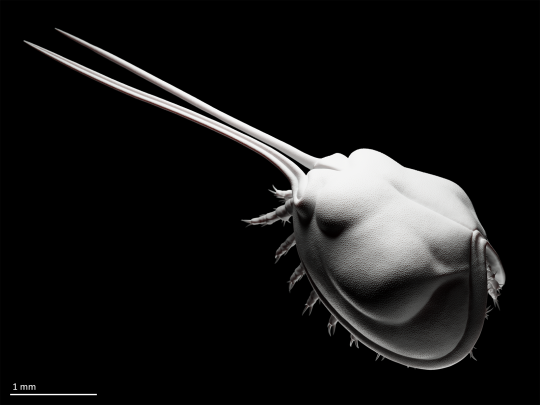
Sculpt of the small bivalved arthropod Gladioscutum lauriei from the middle Cambrian of Australia (after Hinz-Schallreuter & Jones 1994).
Gladioscutum had a body only 2-3 mm long, but, being undoubtedly aware of its disappointingly small size compared to its cooler Cambrian cousins like radiodonts and trilobites, tried to make up for it with a pair of (presumably) front-facing spines that were at least as long as the rest of the head shield.
Other than improving its self-esteem, the function of Gladioscutum's extremely elongated spines is unknown. The enlarged spines of other small Cambrian bivalved arthropods have been suggested to fulfill a sensory role, but this remains speculative (Zhang et al. 2014).
References and notes:
Gladioscutum was originally described as an "archaeocopid", an order that is now known to be an artificial grouping of various small bivalved arthropod fossils superficially resembling modern ostracod crustaceans. To my knowledge, the affinities of Gladioscutum have not been reinvestigated since its initial description, but its appearance (marginal rims, valve lobation, ornamented surface, simple hinge line) and age seem bradoriid-y enough (Hou et al. 2001) for me to more or less confidently reconstruct it as one (top scientific rigour as always on this blog).
Appendage morphology is unknown in Gladioscutum - what little soft anatomy I have not modestly hidden under the head hield is based on the bradoriid Indiana sp. from the Chengjiang Biota (Zhai et al. 2019). In that species, only the antennae are differentiated from the rest of the appendages, which has the double advantage of (1) not making crazy hypotheses about limb specialization in Gladioscutum and (2) giving me fewer different types of limbs to sculpt.
Like Gladioscutum, most bradoriids are only known from their decay-resistant valves, which are often squashed flat in a so-called "butterfly" position. This arrangement has been traditionally interpreted as the life position of the animals, which were implied to crawl over the seafloor like tiny crabs (e.g., Hou et al. 1996). Yet, undistorted fossils of head shields preserved in 3D are almost always closely drawn together, which is similar to the way modern bivalved arthropods like ostracods are articulated (protecting the soft limbs and body) and probably more reflective of the actual life position of bradoriids (Betts et al. 2016), as depicted here.
References:
Betts, M. J., Brock, G. A., & Paterson, J. R. (2016). Butterflies of the Cambrian benthos? Shield position in bradoriid arthropods. Lethaia, 49(4), 478–491. https://doi.org/10.1111/let.12160
Hinz-Schallreuter, I., & Jones, P. J. (1994). Gladioscutum lauriei n.gen. N.sp. (Archaeocopida) from the Middle Cambrian of the Georgina Basin, central Australia. Paläontologische Zeitschrift, 68(3), 361–375. https://doi.org/10.1007/BF02991349
Hou, X., Siveter, D. J., Williams, M., Walossek, D., & Bergström, J. (1997). Appendages of the arthropod Kunmingella from the early Cambrian of China: Its bearing on the systematic position of the Bradoriida and the fossil record of the Ostracoda. Philosophical Transactions of the Royal Society of London. Series B: Biological Sciences, 351(1344), 1131–1145. https://doi.org/10.1098/rstb.1996.0098
Hou, X., Siveter, D. J., Williams, M., & Xiang-hong, F. (2001). A monograph of the Bradoriid arthropods from the Lower Cambrian of SW China. Earth and Environmental Science Transactions of The Royal Society of Edinburgh, 92(3), 347–409. https://doi.org/10.1017/S0263593300000286
Zhai, D., Williams, M., Siveter, D. J., Harvey, T. H. P., Sansom, R. S., Gabbott, S. E., Siveter, D. J., Ma, X., Zhou, R., Liu, Y., & Hou, X. (2019). Variation in appendages in early Cambrian bradoriids reveals a wide range of body plans in stem-euarthropods. Communications Biology, 2(1), Article 1. https://doi.org/10.1038/s42003-019-0573-5
Zhang, H., Dong, X., & Xiao, S. (2014). New Bivalved Arthropods from the Cambrian (Series 3, Drumian Stage) of Western Hunan, South China. Acta Geologica Sinica - English Edition, 88(5), 1388–1396. https://doi.org/10.1111/1755-6724.12306
#i'll probably make more art of cambrian bivalved arthropods with fucked up spines#because there is no shortage of them#and they still manage to all look rather distinct#gladioscutum#bradoriid#(?)#arthropod#cambrian#paleozoic#australia#paleontology#palaeoblr#paleoart#my art
34 notes
·
View notes
Text

Article by: GTHO bible
“It was love at first sight,” is how Gary Thompson remembers the night he saw his 1970 Falcon GTHO Phase Two for the first time.
“It was up on stands on the lot at John Gigante Motors on Parramatta Road in Croydon,” reminisces Gary today from his home in Mount Annan, New South Wales.
“My friend Paul Bianco and I were headed to the ‘brickies’ for some street racing action.
We had just driven by when the bright orange of the car caught my eye, and we immediately turned around to go drool over it,” remembers Gary. “They wanted around $4,200 for it. The salesman didn’t mind letting a 21 year old behind the wheel of such a powerful beast either!” After the road test, Gary talked turkey with the salesman clinching a deal that afternoon which included a then nine month old Electric Blue 351 XY Falcon 500. “They gave me $3,000 as a trade-in,” smiles Gary. This was fifty one years ago back in 1972, and the barely one-year old Falcon GTHO was just out of warranty and had just been traded-in by its first owner.
*** I’LL NEVER FORGET THE NIGHT THE FLYWHEEL EXPLODED THROUGH THE BONNET! ***
“I’d had the Phase Two for just ten days when my good mate Paul who was the test driver for Jack Brabham Ford where we both worked, lined me up to race his peppermint green Lotus twin-cam Mk1 Escort.” “We’d taken off in a symphony of noise, dust and wheel spin.I was revving the HO to 7,200rpm in 1st gear when I clutched to change to 2nd gear. We were flat out side by side on Newbridge Road at Moorebank, it was just before midnight.”“There was a loud bang! Then everything went pitch black.”“I had no headlights, and no dash lights. The electricals had been cut completely.” “Thunder struck, here I was doing 70 mile per hour trying to steer the big Falcon in complete darkness as I slammed on the brakes.My foot went straight to the floorboards and it took me a second to register that I was steering a runaway freight train!” tells Gary as he relives those harrowing frightening moments gripping the thin steering wheel with white knuckles whilst attempting to pull up a ton and a half of an out of control hunk of metal. If anybody had been watching this event unfold, they would have heard a loud explosion, and witnessed pieces of flywheel shrapnel explode through a bulging bonnet, and sparks coming from under the car where the rear of the engine block was tearing up the road. The gearbox bellhousing had also taken leave with the exploding flywheel, leaving Gary with a gearbox full of neutrals. “I was about a kilometre down the road before I came to a stop.”“Paul’s Escort had also suffered shrapnel wounds lodged from projectile bits of the flywheel embedded in his door panels.”“My ten day old car looked like it had been struck by lightning.”“It’s bonnet bulged upwards with a huge gaping hole where 20 ounces of flywheel had exited like an Apollo 11 rocket. The engine was now pointing skywards pressing against the underside of the bonnet.” A tow truck was quickly called from a nearby phone box, and the damaged Falcon GTHO taken to a local panel beater. “The next morning I was told it would be a write-off,” tells Gary, who then decided to have the car taken to another panel shop instead. “I’ll never forget the night the flywheel exploded,” says Gary. Two weeks later the Falcon was all repaired like new again. “The panel shop had offered me an XY GT style bonnet which came complete with air-scoop shaker assembly left over from a Falcon GT. The original XW grille was left on, but we added later model XY taillights.” Gary opted to remove the original black GT side stripes, “We did this for no other reason than to make it look different.” Mechanics at Jack Brabham Ford rebuilt the original motor with new bearings, and fitted a steel flywheel instead of the cast iron factory unit which had exploded into a million pieces. “They even had to repair the dowels at the back of the engine block which had broken off when the motor scraped along the road! The gearbox input shaft also needed to be replaced because it was bent like a banana. We ended up fitting after-market extractors as the original exhaust manifolds had been severely damaged. Before having the engine repaired, Gary who worked in spare parts at Jack Brabham Ford knew John Goss from McLeod Ford. “I had actually bought his ex-race car motor from his Phase Three GTHO for $300. I was going to rebuild it, but it was cheaper to repair my original engine. I sold this bare motor, less the Phase Three race camshaft which a mate fitted to his car, and broke even getting my money back on the whole deal. Originally registered with GT-187 number plates, the HO was re-registered with GT-388 after the repair. Gary kept his Falcon GTHO for a few years after this, and vividly remembers the first time he took it off the clock winding it past 140 miles per hour. “My wife and I were returning from my in-law’s house in Queanbeyan, and as we went through the township of Collector along the Federal Highway, a small Datsun 1600 was right on my backside along the windey bits.
“On the first open straight of road, I took the HO off the clock!”
“My nervous wife looked at the speedo and said ‘it’s on the H where it reads MPH (miles per hour)’.”“I took her word for it.”
“I wasn’t game to take my eyes off the road at that speed!” laughs Gary now.
Five decades would pass before Gary laid teary eyes on his old bright orange Falcon, which is now in the hands of Melbourne collector Joe Barca.
“I never thought I’d ever see my GTHO again,” says Gary in disbelief.
“I was thunder struck again, this time though by the condition it’s in now which is better than it was new!”
Chris Dent from Falcon GT Restorations in Sydney had completely restored this super-rare Ford for a previous owner to a Gold standard Concours condition, resulting in winning the Grand Champion
‘The Best Car of Show’ at the 2015 Falcon GT Nationals.
The current owner Joe tells,
“It had won every category in the show it was entered in.
It cleaned up every trophy! I had to have it.”
It was this moment that Joe knew he had to buy this outstanding GTHO should it ever come up for sale.
As chance would have it, not long after the Falcon came onto the market for sale by tender, and Joe was the successful bidder paying $500,000 for this very special one-of-a-kind car.
“It’s also my wife Debbie’s favourite colour,” states Joe with a wink, as he justifies this expensive purchase.
This said, the Phase Two isn’t Joe’s first rodeo as he’s owned many Falcon GTs and probably more GTHOs than anyone else on the planet.
Unbeknownst to Joe at the time, Gary Thompson the former owner was also the under-bidder who wanted to get his old car back.
Gary’s son Trent then arranged for his dad to see his old Falcon.
“As you can see Dad was very teary seeing it again,” says Trent.
“At least he got to sit behind the wheel again.”
It was at this time that Joe learnt more about this car’s history from Gary who shared his story and photos about the night the flywheel exploded.
This helped Joe to make sense of some minor existing battle scars in the transmission tunnel on the car.

67 notes
·
View notes
Text
The math has been done.
The term “slaughter” was used by editors and reporters to describe the killing of Israelis versus Palestinians 60 to 1, and “massacre” was used to describe the killing of Israelis versus Palestinians 125 to 2. “Horrific” was used to describe the killing of Israelis versus Palestinians 36 to 4.
[...]
Only two headlines out of over 1,100 news articles in the study mention the word “children” related to Gazan children. In a notable exception, the New York Times ran a late-November front-page story on the historic pace of killings of Palestinian women and children, though the headline featured neither group.
[...]
While the war on Gaza has been one of the deadliest in modern history for journalists — overwhelmingly Palestinians — the word “journalists” and its iterations such as “reporters” and “photojournalists” only appears in nine headlines out of over 1,100 articles studied. Roughly 48 Palestinian reporters had been killed by Israeli bombardment at the time of the truce; today, the death toll for Palestinian journalists has topped 100. Only 4 of the 9 articles that contained the words journalist/reporter were about Arab reporters.
[...]
Asymmetry in how children are covered is qualitative as well as quantitative. On October 13, the Los Angeles Times ran an Associated Press report that said, “The Gaza Health Ministry said Friday that 1,799 people have been killed in the territory, including more than 580 under the age of 18 and 351 women. Hamas’s assault last Saturday killed more than 1,300 people in Israel, including women, children and young music festivalgoers.” Notice that young Israelis are referred to as children while young Palestinians are described as people under 18.
During discussions around the prisoner exchanges, this frequent refusal to refer to Palestinians as children was even more stark, with the New York Times referring in one case to “Israeli women and children” being exchanged for “Palestinian women and minors.” (Palestinian children are referred to as “children” later in the report, when summarizing a human rights groups’ findings.)
A Washington Post report from November 21 announcing the truce deal erased Palestinian women and children altogether: “President Biden said in a statement Tuesday night that a deal to release 50 women and children held hostage by Hamas in Gaza, in exchange for 150 Palestinian prisoners detained by Israel.” The brief did not mention Palestinian women and children at all.
The link to their basic dataset is on GitHub:
And what's one of the article's key observations? Politicians angy that kids won't sit still and eat their propaganda.
The result is that the three major papers rarely gave Palestinians humanizing coverage. Despite this asymmetry, polls show shifting sympathy toward Palestinians and away from Israel among Democrats, with massive generational splits driven, in part, by a stark difference in news sources. By and large, young people are being informed of the conflict from TikTok, YouTube, Instagram, and Twitter, and older Americans are getting their news from print media and cable news.
Biased coverage in major newspapers and mainstream television news is impacting general perceptions of the war and directing viewers toward a warped view of the conflict. This has led to pro-Israel pundits and politicians blaming pro-Palestinian views on social media “misinformation.”
Analysis of both print media and cable news, however, make it clear that, if any cohort of media consumers is getting a slanted picture, it’s those who get their news from established mass media in the U.S.
#free palestine#palestine#free gaza#gaza#media literacy#propaganda#media bias#they did the monster math
10 notes
·
View notes
Text
BNHA 387 Japanese to English Translation + Commentary

火叢は血が濃いんだ
ひむらはちがこいんだ
= “Himura blood is thick.”
Tagline 1:
No.387 煮凝り
ナンバー387 にこごり
= No. 387 Nikogori
煮凝り (romaji: nikogori) is a traditional Japanese jellied broth made by boiling meat or fish bones, scales, heads, and tails to extract a savory nutrient-dense jelly that is then cooled and solidifies due to its high gelatin content. Other gelatins are sometimes added to the mix. After cooling and solidifying, the nikogori jelly is typically used to encase or accent other foods. Unagi nikogori, pictured below, is a dish of eel encased in fish gelatin, for example:
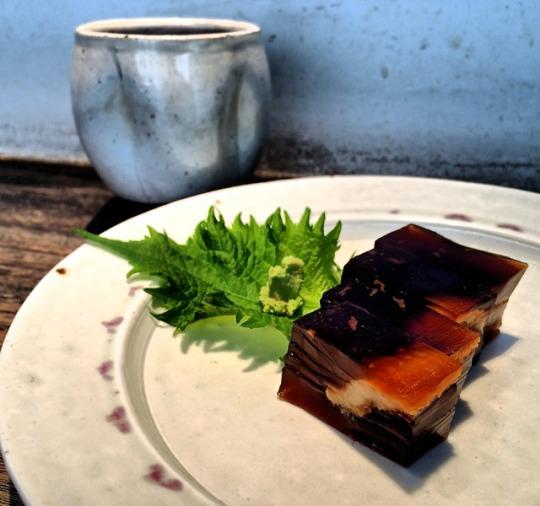
Nikogori is written using two kanji: 煮 (= “burn; boil; cook”) and 凝 (= “freeze; congeal”). In No.351, Touya mocks Shouto by comparing him to the jellied broth, making a pun of the kanji for nikogori and the kanji for Shouto’s name, both of which translate to “burn” + “freeze.” But Shouto doesn’t appear in this chapter, so who, if not him, does the title, Nikogori, refer to? Touya, the other fire + ice broth-er.
Tagline 2:
語るは…
かたるは…
= The speaker…
古くからの庄屋だった火叢は農地改革後も分家を増やす事で財とプライドをなんとか保ってきた
ふるくからのしょうやだったひむらはのうちかいかくごもぶんけをふやすことでざいとプライドをなんとかたもってきた
= “The Himuras, who were village leaders in times of old, managed to preserve their fortune and pride even after [Japanese] agrarian reform by adding branch families.”
Here’s a very, very brief excerpt from a published journal article about the subject:

Japanese agrarian reform “gave land to the landless.” This monumental redistribution of land and associated resources came at a great cost to village heads, called “landlords” by the author, whose power and influence decreased significantly in the years that followed. The Himuras tackled the problems of ongoing land and monetary losses by increasing their numbers through the establishment of branch families (i.e., more members = more opportunities to accumulate wealth for the family and maintain some semblance of their former status).
Tagline 3:
超常解放戦線幹部
ちょうじょうかいほうせんせんかんぶ
= Paranormal Liberation Front Officer
Tagline 4:
外典 個性「氷操」
げてん こせい「ひょうそう」
= Geten, Quirk: “Ice Manipulation”
でも超常が起きると共に加速度的に零落していった
でもちょうじょうがおきるとともにかそくどてきにれいらくしていった
= “Nevertheless, the advent of the paranormal hastened their ruin.”
血が混ざるのを嫌ったんだ
ちがまざるのをきらったんだ
= “They hated mixing blood.”
お家柄と…異形差別のコンボね スピナーが聞いたらなんて言うかな
おいえがらと…いぎょうさべつのコンボね スピナーがきいたらなんていうかな
= “A combination of pedigree and… igyou* discrimination. What would Spinner say if he heard this?”
異形 (romaji: igyou) is the word commonly translated as “heteromorph,” and indeed, it can mean “atypical appearance; atypicality; heteromorphy.” There are two potential hiragana forms for 異形. The first, いぎょう, corresponds to the dictionary meaning “fantastic; grotesque; strange-looking; suspicious-looking” and is the word used by everyone in-series to refer to this class of people.




The second, いけい, corresponds to the dictionary meaning “atypical appearance; atypicality; heteromorphy.” Characters like Spinner and Shouji belong to a class of people literally called “grotesque [people].” Caleb’s choice to translate igyou as “heteromorph” understates the violence and prejudice built into the word itself. Functionally, igyou is a racial slur that stereotypes an entire subpopulation as socially undesirable, untrustworthy, and criminal, even monstrous. But if we are to believe that Mr. Compress cares about Spinner as his friend, why does he use it? Because, as Spinner notes in No.220, no one can agree on an alternative word that isn’t offensive.
Tagline 5:
Mr.コンプレス
ミスターコンプレス
= Mr. Compress

結果分家…遠縁同士での結婚が相次いだ
けっかぶんけ…とおえんどうしでのけっこんがあいついだ
= “As a consequence of [these] branch families… marriages among distant relatives occurred one after another.”
血が濃いってそういう…
ちがこいってそういう…
= “That’s what you meant by thick blood…”
自らを閉塞環境に置き火叢家は縮小の一途を辿り
みずからをへいそくかんきょうにおきひむらけはしゅくしょうのいっとをたどり
= “By placing themselves in a closed [genetic] environment, the Himura family continued to shrink,”
とうとう本家が身売りを始めたことで事実上の終焉を迎えた
とうとうほんけがみうりをはじめたことでじじつじょうのしゅうえんをむかえた
= “and when eventually the main family began to sell themselves [into marriages with members of other prestigious families], it came to a de facto end.”
残りの僅かな氏族も離散し
のこりのわずかなしぞくもりさんし
= “The few remaining families are scattered.”
その中の一つだった僕は最高指導者に拾われた
そのなかのひとつだったぼくはリ・デストロにひろわれた
= “I was one of them and was picked up / taken in by Re-Destro (read as: the Supreme Leader).”
異能は世代を経るごとにより複雑に深化していく
いのうはせだいをへるごとによりふくざつにしんかしていく
= “As meta abilities pass through generations, they deepen in complexity.”
In other words, Quirks have grown more complicated and therefore more difficult to understand and manage with each successive generation. Quirk Singularity is real, BUT NOT EVERYONE EXISTS AT A SINGULARITY. ALL QUIRKS ARE NOT CREATED EQUAL. THE POINT OF QUIRK MARRIAGES WAS TO COMBINE POWERFUL QUIRKS TO EXPEDITE THE SPEED WITH WHICH A PERSON WOULD ACHIEVE A SINGULARITY, TIPPING THE BALANCE OF POWER IN FAVOR OF THOSE WITH THE STRONGEST QUIRKS. EVEN AMONG CLOSE BLOOD RELATIVES, SOME MEMBERS WILL HAVE INHERITED DIFFERENT COMBINATIONS OF GENES PRODUCING DIVERSE RESULTS. IT IS POSSIBLE FOR ONE MEMBER OF A FAMILY TO HAVE REACHED SINGULARITY AND ANOTHER NOT. FUYUMI AND NATSUO ARE NOT SHOUTO, AND SHOUTO IS NOT TOUYA. QUIRK SINGULARITY IS NOT A “GOOD” OR BENEFICIAL THING. AT THAT POINT, A QUIRK BECOMES UNCONTROLLABLE, HIGHLY VOLATILE, AND DANGEROUS TO ITS USER. THE PERSON IS BEING DRAGGED BY THE QUIRK. THEY DO NOT HAVE A QUIRK; A QUIRK HAS THEM.

濃く深く堆積した因子には本人すら知覚し得ない力が眠っているかもしれない
こくふかくたいせきしたからだにはほんにんすらちかくしえないちからがねむっているかもしれない
= “In thickly and deeply layered bodies (read as: [Quirk] factors) may lie latent abilities / power even the person themselves is unaware of.”
だが人は心を置き去りにしたままだ
だがひとはこころをおきざりにしたままだ
= “But people still just abandon their hearts.”
The word commonly translated as “Quirk” is kosei, meaning “individuality; personality; quirk; idiosyncrasy; character; individual characteristic.” By definition, then, Quirks are more than cool special features some people “have” and some people “don’t have.” They’re an expression of the self, a peek into who a person is, their “heart” or “nature.” The Quirk reflects the person as much as the person reflects the Quirk. To deny one’s Quirk is to deny one’s self. To reject the Quirk is to reject the person. Under this definition, and if we think of Quirks as windows into the soul, so-called “Quirkless” people also have a Quirk: being “Quirkless.” If Quirks are manifestations of a person’s individuality or personality, then Quirkless people would be characterized by a weak or nonexistent sense of self (and subsequently, an underdeveloped sense of self-preservation and exaggerated tendency toward self-sacrifice).
明日…何が変わるだろう
あす…なにがかわるだろう
= “Tomorrow… I wonder what [tomorrow] will bring.”
変わる (romaji: kawaru) is a verb meaning “to change; to be transformed; to be altered; to vary (e.g., the weather may be changeable, prone to sudden dramatic shifts).”
Geten assumes the world will be changed by the war and is wondering how it will be different.
さァ次はおまえだ
さァつぎはおまえだ
= “Well, next is you.”
警察・ヒーローと何を話してた?
けいさつ・ヒーローとなにをはなしてた?
= “What were you talking about with the police and Heroes?”
何でもいい聞かせろこの戦いが終わるまでの暇つぶしに
なんでもいいきかせろこのたたかいがおわるまでのひまつぶしに
= “Let me hear anything to kill time until this war comes to an end” or “Anything [you want to tell me] is fine [by me] to kill time until this war comes to an end.”
Geten is anxious about the outcome of the war. He is requesting that Atsuhiro help him fill the silence. Any words will do. All that matters is that he is not left alone with his thoughts.
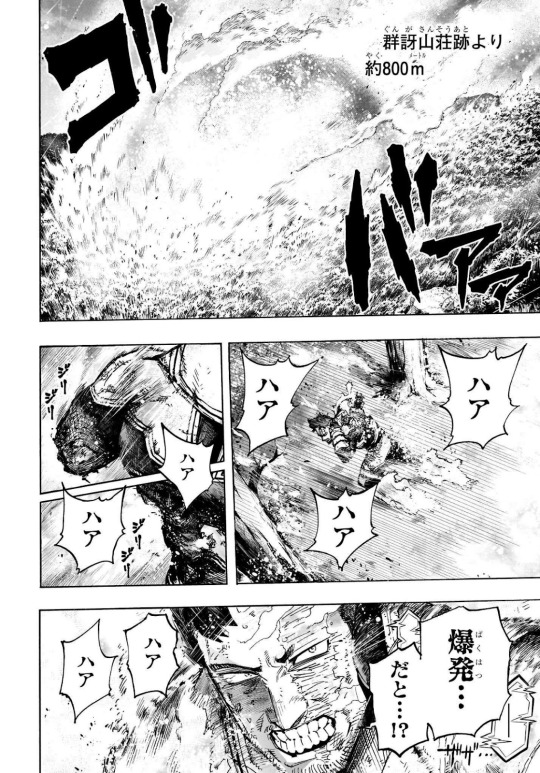
群訝山荘跡より約800m
ぐんがさんそうあとよりやく800メートル
= Approximately 800 [Meters] from the Gunga Mountain Villa Ruins
ハア
Note: This is an onomatopoeia for the sound of heavy panting/breathing. You’ll notice it repeated several times on this panel. Enji is exhausted and struggling.
爆発… だと…⁉︎
ばくはつ… だと…⁉︎
= “Explosion…!?”
This has no real bearing on the translation, but I do want to address it since my translation of this line differs slightly from Pikahlua’s (“An explosion… you say…!?”) and some may wonder why. だと (romaji: dato) is formed by the copula da and the quoting particle to. It expresses surprise or disbelief at something someone has said. Here, Enji is quoting something he has heard (i.e., that any time now Touya will explode, killing them all) and expressing his incredulity at the news. Dato is commonly translated in English as “you say,” but it might also be conveyed simply by the inclusion of an interrobang, that is, the exclamation point + question mark combination at the end of a sentence. Maybe it’s because I write fiction from time to time, but when I am translating, I read the text out loud to hear how it sounds. Sometimes a line sounds better in one language than it does another. To my ears, “explosion… you say…!?” sounds kind of weird and unnatural. How often do you hear a native English speaker speak like that? And yet, native English speakers express surprise or disbelief at something they’ve heard all the time. So, I opted to let the interrobang do the talking. The meaning of the sentence isn’t affected by whether the translator decides to translate dato directly into written form (i.e., “you say”) or not. Context and interrobang are enough on their own to convey that the speaker is shocked by something they have been told.
ハア
Note: This is an onomatopoeia for the sound of heavy panting/breathing. You’ll notice it repeated several times on this panel. Enji is exhausted and struggling.

避難ブロックだけじゃない…
ひなんブロックだけじゃない…
= It won’t just be the evacuation blocks…
今トガの増殖を抑えてるピクシーボブたちもーーー‼︎
いまトガのぞうしょくをおさえてるピクシーボブたちもーーー‼︎
= Pixiebob and the others currently suppressing Toga’s proliferation———!!
いかん…AFO戦のダメージが脚に来ている…!
いかん…オール・フォー・ワンせんのダメージがあしにきている…!
= This is bad… The damage from the AFO battle is spreading to my legs…!
Notice how Enji’s body is drawn: with his right side emphasized (toward us), calling attention to his amputated arm and gouged side. If you recall from No.354, Endeavor sustained a nasty injury not unlike the one that ended All Might’s Hero career. It is the reason All Might regularly coughs blood. These critical injuries are definite parallels, with Endeavor’s injury being to his right side and All Might’s to his left. Mirrors. This is not the first time the two rival Heroes have mirrored one another. During his career-defining encounter with the High-End Noumu called Hood, Endeavor raised his right fist to signal his triumph over his opponent, recreating All Might’s iconic victory pose but with the opposite arm. Unlike All Might, however, Enji also lost his right arm in his fight against AFO and was forced to cauterize his wounds closed, potentially further damaging internal structures and tissues, or else bleed to death on the battlefield. Cauterizing an injury might buy a person time getting to a hospital, but it does not solve the problem of significant blood loss due to amputation and/or maiming, nor does it mitigate the risk of infection leading to the development of sepsis and multiple organ failure. I know, I know. BNHA is a work of fiction and fiction is seldom an accurate representation of reality, but it is worth bearing in mind that Toshinori continues to suffer medically due to his years-old injuries. His survival came at a steep cost, a cost paid by the losses of his career, health, and quality of life. Assuming Endeavor survives the war, he will likely have similar issues.
That Endeavor’s lower half is now being affected by AFO’s mutilation of his upper half suggests that more is going on internally than is apparent. It’s worse than it looks.
これ以上燈矢を誘導して遠くへ向かうには———…
これいじょうとうやをゆうどうしてとおくへむかうには———…
= [I don’t think I can] lead Touya any farther away———...
あっ
= “AH”
お
= “OH”

おどおさん
= “DAAAD,”
見で
みで
= “LOOK.”
見でええ
みでええ
= “WAAATCH [ME].”
Let’s talk about how Touya is speaking, because it is indicative of his collapsing mental state. The first thing Touya says is お父さん (romaji: otousan), meaning “father; dad.” This is the most common and most respectful way for Japanese children to address their fathers, but Touya slightly mispronounces it, softening the harder “t” sound into a rounder “d.” Otousan becomes odousan. He also elongates the “o” sound that forms the middle of the word. So, otousan becomes odouusan. In English, Touya is just saying “dad,” but in Japanese, there is a subtle pronunciation difference that deviates from Touya’s norm, clueing us in that something is wrong.
見て (romaji: mite) is the te-form of the verb 見る (romaji: miru), meaning “to see; to look; to watch; to view; to observe.” It can also mean “to look after; to attend to; to take care of; to keep an eye on.” This word and the concept of seeing or watching plays a pivotal role in the Todoroki subplot, particularly in relation to Touya, Enji, and Rei’s characters, with Touya begging to be seen, Enji and Rei admitting to not seeing him, and Endeavor asking the frightened civilians (and Shouto) to watch him. Something I don’t see discussed enough is the nuance of this word. Yes, it means “to see; to look; to watch” and is usually translated as such, but it can also mean “to look after; to attend to; to take care of (e.g., in a medical or caretaking sense, the way a doctor or nurse does a patient or a good parent does a child).” It is a gross oversimplification of Touya’s character to say he is just “throwing the tantrum of a lifetime because Daddy and Mommy didn’t look at him enough / pay him enough attention.” Touya is asking for more than to be acknowledged. He is asking to be taken care of, to be loved and sympathized with and understood and held and protected in exactly the way every child needs and deserves. “SEE ME. CARE FOR ME.” People need people. Children need their parents. I say this as the oldest sibling who did my damndest to “raise” and shield my younger siblings from the chaos and dysfunction of our household: Siblings are not enough, can never be enough, and can never replace the unconditional love and support of a warm, emotionally attuned parent. Neither can friends or found family. Relationships come in many forms. Love comes in many forms. Healing comes in many forms. But at his core, Touya is still that wounded little boy abandoned and forgotten by his father and mother who needed them desperately and cried out for a decade before self-immolating on Sekoto Peak for anyone to help him because his best childhood efforts to help himself weren’t enough to stop his downward spiral. His every bid for connection fell on deaf ears because his father and mother BOTH lacked the emotional maturity, psychological wellness, knowledge, and skills to support him, and his siblings were children themselves, unable to meet his needs or their own.
Regardless of how we might feel about them as parents (if you are familiar with my posts, you know I have LOTS of strong feelings about that), it is important to recognize that Enji and Rei were themselves wounded children who grew up to be wounded adults who were not supported to become the best versions of themselves. Their chances of raising happy, healthy, well-adjusted children without first doing the work to become happy, healthy, well-adjusted individuals were slim to none. Touya is unique in that he is the only Todoroki sibling not shown to form part of a protective pair during his time in the house. Playing with your siblings is not the same thing as being supported by them. When Touya cried, he cried alone without anyone to comfort him. When Touya burned, he burned alone. When Enji was terrorizing Rei or Shouto, Fuyumi and Natsuo held one another while Rei and Shouto moved to defend and console the other. Where was Touya? We don’t know. He was literally not pictured, an artistic choice designed to render him as invisible to us, the reader, as he was to his family. What we can be certain of is that wherever Touya was, he was crying… and burning. Everyone in the family suffered. Touya suffered differently. He is both a product and a reflection of his parents’ personal failures. Enji has attempted to carry the burden of accountability for Touya’s outcome entirely on his shoulders, as if he alone was the “problem” and the “solution,” but there is one other person who shares that responsibility, and it’s not Shouto. It’s Rei, Rei who is Touya’s mother, his other parent. She, too, failed to nurture, protect, and care for her children, and Touya died and became Dabi as a result of her (and Enji’s!) inadequacies. In No.302, Rei said that everyone in the family would have to “take responsibility for what happened and what happens next,” but she was wrong and shifting blame. It is Rei and Enji who must take responsibility, because it is they who were responsible for Touya, not Fuyumi or Natsuo or Shouto. Hopefully, we’re moving toward them actually doing that. Hopefully.
Circling back to the translation, Touya means to say “miTe.” What he actually says is “miDe.” This is someone who chooses his words carefully and speaks with intention, so it is absolutely cause for concern that he is mispronouncing common words.
Before we move on to the next panel, I want to point something out that would be easy to miss if you’re the kind of person who skims the pages without taking the time to reeeeaaaallllyyyy look at the illustrations.
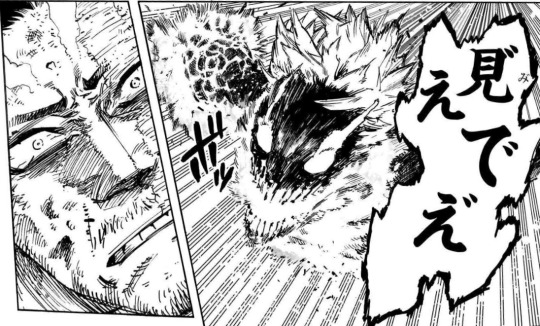
Take a good, long, hard look at Touya’s right arm, the one he’s swinging toward Endeavor. It is literally shattering into pieces as it swings forward. During the post-death cremation process, after which Dabi is named, the body is reduced to its essential elements via exposure to open flame, intense heat (1400-2000°F), and evaporation. The tissues, organs, and fat of the body are destroyed. This is known as primary combustion. During secondary combustion, the inorganic particles that remain after primary combustion, which consist mainly of carbon dioxide and water vapor, discharge, leaving behind bone fragments that are then pulverized into “ashes,” at least in the West. In the East, these pieces of bone are collected and placed in a funerary urn for burial, which may happen immediately or some time after the cremation ceremony (Dabi). Touya is cremating while still alive. Charred pieces of tissue and bone are being thrown from his body with every move. This is not new. This is not something Endeavor, who, for all his running, has yet to attack Touya, did. This is something that was happening from the moment Touya found himself warped to the Kamino Ward with Shouto instead of Endeavor and that Shouto sped along, whether he intended to or not, by repeatedly attacking Touya. If you go back to those chapters, you’ll notice black flecks of burnt skin and other tissues being blasted off of Touya’s body every time Shouto strikes and light peeking through the tiny holes forming in his body. Phosphor was specifically created to protect Shouto (and other Heroes) from Touya’s flames by holding Shouto’s internal temperature steady and neutralizing Touya’s incredible heat, rendering him powerless to defend himself and/or harm others. Every second Touya spent with Shouto pushed him closer to death.
Let’s quickly talk about names and the implications of them. The kanji for Touya’s name are 燈矢, meaning “light; lamp; lantern; candlelight” and “arrow,” respectively. The accompanying hiragana, which tell us how to pronounce the name, are とう (romaji: tou) and や (romaji: ya). These hiragana can also mean “training; education; cultivation,” which is fitting because one of Touya’s defining attributes is his awesome work ethic and commitment to continuous self-improvement. The impression of the name is of something on the climb, soaring high above the clouds, which is also fitting as this is exactly what Enji hoped and believed Touya would do. If you are familiar with the kanji for Shouto’s name, you know they translate to “burn” + “freeze.” Clearly, he was named for his Quirk. For Enji, Touya was person before Quirk, his son; Shouto was Quirk before person, his masterpiece and means to an end. But what of the hiragana for Shouto’s name? These are しょう (romaji: shou), also the hiragana associated with the kanji (= 賞) for “prize; award,” and と (romaji: to). This combination of hiragana bears a striking resemblance to the hiragana for 消灯 / しょうとう (romaji: shoutou), meaning “to put out the light; to turn off the lights.” If Touya = “light,” then Shouto = one who does away with the “light.” As sad as it is and as disturbing as it might be, Shouto’s birth all but guaranteed Touya would die.

こんなのできるよぉになったんだぜ!
= “I’ve become able to do something like this!” or “I can do this now!”

炎を止めろ燈矢…‼︎
ほのおをとめろとうや…‼︎
= “Stop the flames, Touya…!!”
He can’t, couldn’t if he wanted to. Touya’s Quirk is tied to his emotions. The more panicked he is, the more frenzied his attacks will be. Look how chaotic his movements are. He’s losing his shit.
見でええ みでええ
= “WAAATCH [ME].”

…死なせたくない…!
…しなせたくない…!
= “... I don’t want you to die…!”
なづぐん
= “NATSU-KUN,”
This is also mispronounced. He means “Natsu-kun,” but he says “Nadzu-gun.”
あぞぼお…おお⁉︎
= “LET’S PLAYY…YY!?”
もう…意識が…!
もう…いしきが…!
= [His] consciousness… is already…!
This is Enji realizing that it’s too late for Touya. Once again Enji kept Touya waiting and missed every opportunity (and there have been many) to reach (and “save”) him, allowing himself to be persuaded to entrust Touya to someone else (= Shouto), just like he did when Touya was a child, because it benefitted everyone else more for Touya to be dead last on the Number One Hero’s list of priorities than first. More than anyone, Touya needed his father. More than anyone, Touya hoped his father would come through for him. More than anyone, Touya believed his father would. And more than anyone, Touya’s father has devastated him and taught him again and again that he does not matter. His pain does not matter. His life does not matter. And his (second) death will not matter (just like his first didn’t).
…俺が灼ける程の熱で
…おれがやけるほどのねつで
= … [This] heat is enough to burn [even] me.
The word used here for “heat,” netsu, can also mean “zeal; passion; enthusiasm.”
Let’s put netsu in the context of Touya’s Quirk. Enji said about Touya that he was born with talent and firepower greater than his own. We know from No.301-302 and from No.267 that the strength and intensity of Touya’s flames is influenced by his emotional state. If Enji’s zeal, passion, and enthusiasm [to become superhuman and prove it to himself by surpassing All Might, a “real superhuman”] burned hot enough to blind him to how his family was being impacted, Touya’s burns even hotter. The more desperate Touya becomes, the more destructive his fire will be. His emotions dictate his Quirk, and his Quirk dictates his behavior. Touya does not “possess” a Quirk in the traditional sense, like Uraraka or Kirishima or Mineta do. A Quirk possesses him.
何でここまで…保ってこられた
なんでここまで…たもってこられた
= How has he… endured [the heat and not died] up to this point?
燈矢…‼︎
とうや…‼︎
= Touya…!!
おまえは———
= You———
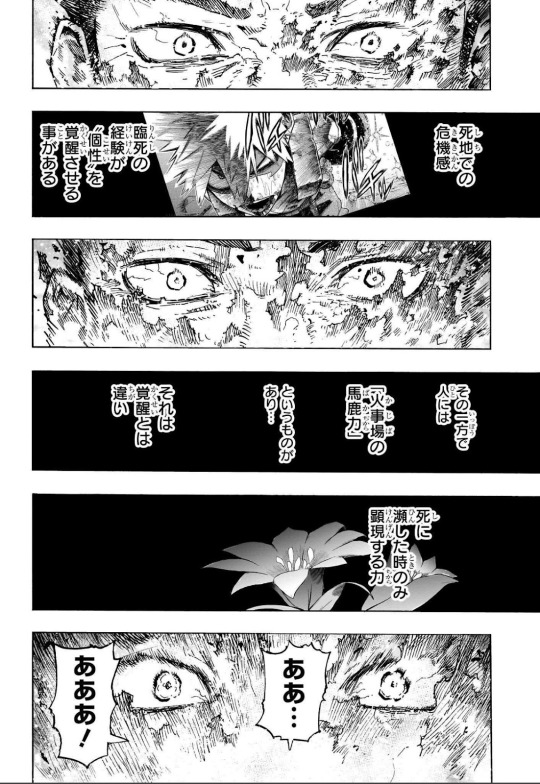
死地での危機感
しちでのききかん
= [A person’s] sense of impending crisis [in the face of] almost certain death.
臨死の経験が"個性"を覚醒させる事がある
りんしのけいけんが"こせい"をかくせいさせることがある
= There have been cases of Quirks being awakened by near-death experiences.
その一方で人には「火事場の馬鹿力」というものがあり…
そのいっぽうでひとには「かじばのばかちから」というものがあり…
= On the other hand, people [have been known to] have something like ‘hysterical strength at the scene of a fire.’
馬鹿力 (romaji: bakajikara) literally translates to “stupid strength.” Several online dictionaries return these additional definitions: “hysterical strength; animal strength; great physical power.” However it is translated, bakajikara refers to the superhuman strength, speed, agility, and endurance that a person might experience under extreme physiological stress to help carry them through a high stakes event, such as being trapped in a burning building or fighting off an assailant. Recently I read a news article (and watched a video) about a family whose apartment caught on fire with the mother and children inside. Neighbors and passersby called for the mother to jump from the balcony with the small child she was carrying in her arms, but again and again she ran back through the flames to retrieve her other children. After dropping the second child to the safety of the civilians down below, she was on fire and dying, but she braved the flames one more time to save her third and final child. Then she dropped dead on the balcony. Her injuries were so horrific, she could not even be visually identified as a biological female. Had it not been for her children clarifying that they were home alone with their mother when the fire started, the police would not have known who she was. But how did she do it? How did she keep moving long enough to save her children, even as she was burning beyond recognition? Love… and “stupid strength.”
それは覚醒とは違い
それはかくせいとはちがい
= That’s different from an awakening.
死に瀕した時のみ顕現する力
しにひんしたときのみけんげんするちから
= [A] power / ability that manifests only when [a person is] on the brink of death.
ああ…
= “Yes…”
あああ!
= “I get it!”

冷の
れいの
= Rei’s
"個性"…‼︎
"こせい"…‼︎
= Quirk…!!
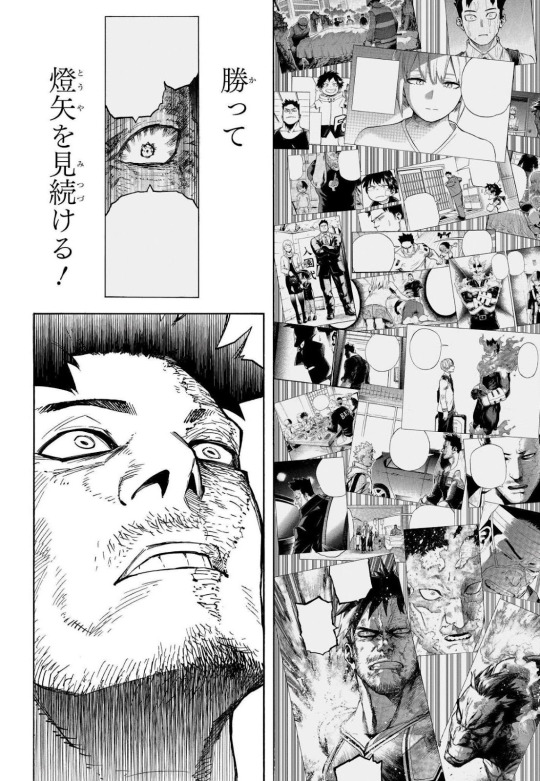
勝って燈矢を見続ける!
かってとうやをみつづける!
= [I will] win and keep seeing / watching Touya!
This is a flashback to No.357 when Endeavor set his intention to defeat AFO and continuously see / look after Touya. It sounds to me like he was hoping to win to save and save to win.

全部俺の責任だ
ぜんぶおれのせきにんだ
= “This is all my fault.”
全部背負って償いに生きねばと思っていた
ぜんぶせおってつぐないにいきねばとおもっていた
= “I thought [that I had] to bear the burden of responsibility for everything and live to make amends.”
でもおまえはずっと俺を見続けてたんだもんな…
でもおまえはずっとおれをみつづけてたんだもんな…
= “But all along you kept watching me, even though…”
おまえを見てやれなかった……
おまえをみてやれなかった……
= “I couldn’t see you……” or “I couldn’t look at you……”
It’s not that Enji didn’t know Touya was suffering. It’s that he didn’t want to know it, because the knowledge that his actions had destroyed his son’s mental health was overwhelming and terrifying and made him feel weak and powerless to do anything but play out the same tired routine day after day to make Touya’s—and his late father’s—destruction mean something. That feeling of powerlessness [probably, almost certainly] reminded him of being a kid helpless to save his father and determined to never feel that way again, so he ran. It was easier to bury his head in the sand and pretend not to see the damage he had done to the person who trusted, believed in, loved, and needed him most. I wouldn’t be surprised if Enji’s relationship with Touya prior to his “death” by fire mirrored his relationship with his own father, another flame-user who also tragically perished in a fire. I especially wouldn’t be surprised if that is the case because that dynamic seems to be implied to be generational in No.356.
But Enji isn’t the only one who turned a blind eye to Touya’s despair. Touya was falling apart emotionally and physically, so Rei abandoned him and the others and attached herself to Shouto, Shouto who never held her accountable for her part in the family dysfunction and still showed promise, promise that ensured Enji would continue financially supporting her and the Himuras so they didn’t have to adapt to the modern era that didn’t reward them for no other reason than that they were Himuras by—I don’t know—getting a job like everyone else who can’t get by on a name alone. Fuyumi coped with her traumatic home life by becoming a person who sweeps problems under the rug, pretends they don’t exist, and implicitly shames others (e.g., Natsuo, Shouto) for not doing the same and “letting bygones be bygones.” The Todorokis, namely Enji, Rei, and Fuyumi, collectively chose to avert their eyes and deny, deny, deny. Natsuo isn’t totally blameless either. In No.302, Natsuo, now an adult and student in the mental health field, remarks that he should have “punched [Enji] and confronted Touya,” a loaded, victim-blaming comment that all but confirms he believes Touya (but not Rei?) also was at fault for the family’s problems. This is not at all uncommon in abusive households, but it is problematic in that it attributes blame as much or more to victims than to perpetrators. And yes, I realize that Rei, too, was a victim and yet I am assigning culpability for her children’s adverse childhood experiences both to her and to Enji, the (primary) perpetrator. The difference is that Rei was an adult, while the children were minors incapable of advocating for themselves or seeking help from external sources. They were dependents forced by age, developmental stage, and a lack of financial resources to rely on adults to meet their needs. Ultimately, Rei, not unlike Enji, was an adult with a responsibility to her children that she failed to uphold.
おまえにも償わなきゃいけなかったんだ
おまえにもつぐなわなきゃいけなかったんだ
= “I needed to atone to you as well.”
No shit? Why is this being treated like some kind of revelation? Wasn’t Enji trying in some small way to do right by Touya by doing right by Izuku, who reminded him of Touya? Wasn’t Enji’s “I will win and continue watching Touya” line a sign that he understood he needed to atone to Touya and how? What are we doing, Horikoshi? It feels like we’re taking one step forward and two steps back.
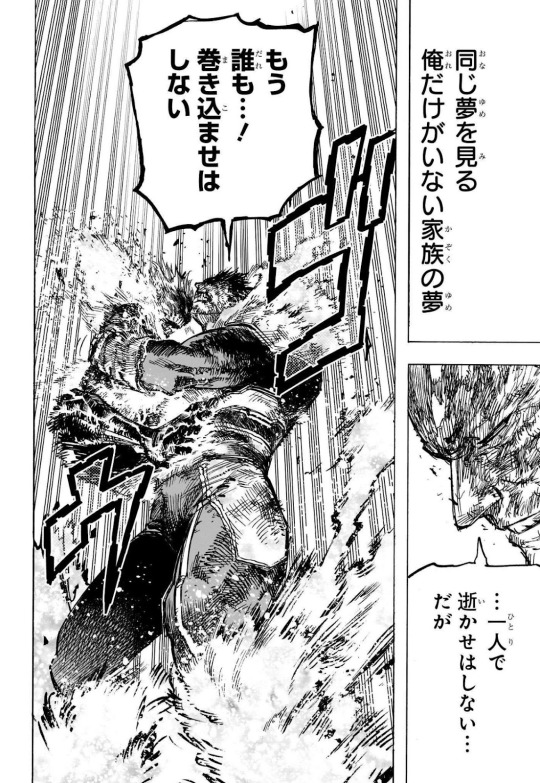
同じ夢を見る俺だけがいない家族の夢
おなじゆめをみるおれだけがいないかぞくのゆめ
= I dream the same dream of my family, but without me.
You might remember this line from No.249, where it or a variation of it appears twice, once at the beginning of the chapter and once at the end of the chapter. Here both scenes are, translated from Japanese into English for your convenience:

最近同じ夢を見る
= Recently [I] have the same dream.
妻と子らが幸せそうに食卓を囲んでいる
= My wife and children sit happily around the dining table.
そこに俺はいつもいない
= I’m never there [with them].

自分が家の為に今更何ができるのか
= What can I do [at this late stage, when it is already much too late] for the sake of my family?
最近同じ夢を見る
= Recently [I] have the same dream.
おまえもそこにいてほしかった燈矢
= [I] wish you were there too, Touya.
(That concludes our visit to the past. Let's jump back into the translation for No.387!)
…一人で逝かせはしない…だがもう誰も…!
…ひとりでいかせはしない…だがもう誰も…!
= “... I won’t let you die alone… but no one else…!”
巻き込ませはしない
まきこませはしない
= “[We] won’t involve [anyone else]!”
Enji’s plea for Touya to not “involve” anyone else echoes Shouto’s call for the same in No.351-352 (except Shouto added “take it all out on us,” with “us” referring either to the Heroes or to the Todoroki family as a whole). Whether Shouto meant for Touya to direct his anger at the Heroes or at the Todoroki family in its entirety, he did NOT intend to be the only one on the receiving end of it. Shouto intended to limit the damage to himself and some others. Enji intends to limit the damage to just Touya and himself.

地上の移動では間に合わない
ちじょうのいどうではまにあわない
= [They] won’t [be able to] evacuate [the area] above ground in time.
This might also be translated as “[I] won’t [be able to] cover enough ground in time,” as in Touya will explode before Enji can put sufficient distance between the two of them and everyone else to minimize the impact of the blast. He knows Touya is dying and plans to die with him as his father, but as a Hero (and the Number One Hero no less) he is still trying to save lives.
Note: The skin of Touya's chest and shoulders are breaking off. His body now resembles cracked earth disturbed by an underground volcanic eruption.

燈矢 おまえの火力も借りて空に———
とうや おまえのかりょくもかりてそらに———
= Touya, [I am] borrowing your firepower to [launch us] into the sky———
待て…待ってくれ…!
まて…まってくれ…!
= Wait… please wait…!
もう少しだけ———!
もうすこしだけ———!
= Just a little longer———!
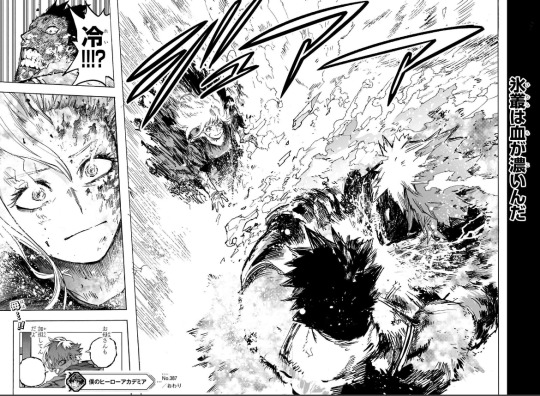
火叢は血が濃いんだ
ひむらはちがこいんだ
= Himura blood is thick.
冷!!⁉︎
れい!!⁉︎
= “Rei!!!?”
This is Enji reacting to Rei’s presence, if that wasn’t clear by the close up of his face followed by hers. If you look closely at the position of Enji’s head on the right side of the panel you’ll notice that he has turned his face toward Rei, away from Touya. His expression is one of shock and horror. This is someone who has just learned that his son will explode, killing everyone within a large radius, from evacuees to Heroes and even other Villains. Everyone caught in the blast will be incinerated. Here he was hoping to save countless lives by limiting the damage to just himself and Touya (not unlike Shouto, who yelled for Touya to “take it all out on us” and not “involve” anyone outside the family), and here Rei is, pushing her way through the flames into the fray. If Touya burns, he, Enji, and Rei will burn together. That fits, because Enji doesn’t actually bear sole responsibility for Touya’s outcome now or then. Rei is his mother, and as his mother, she, too, bears that burden. Enji failed to be a “good enough” father to Touya, and Rei failed to be a “good enough” mother to him. As she said in No.302, she also didn’t see Touya. She also turned away from him. She also abandoned her son when he became more than she knew what to do with. So when he died at thirteen years old after enduring a decade of parental abuse and neglect, his blood was on her hands as much as on Enji’s, because she didn’t do enough to help him when he was at his weakest and most vulnerable. And look, I know Rei had it hard and was suffering, but she still had a responsibility to the children she helped to create to nurture, protect, and care for them, a responsibility she and Enji both fumbled. The sad reality is that parents can love their children and still fail to do right by them. Parents can want the best for their children and still not be the best for them. Touya suffered for having had Enji as his father, and he suffered for having had Rei as his mother. What has happened is on both of them. What happens next is on both of them.
お母さんも
おかあさんも
= “[You] too, Mom.”
Literally, Touya says, “Mom too.”
加担してんだよ
かたんしてんだよ
= “You’re complicit.”
End Tagline:
母…‼︎
はは…‼︎
[His] mother…!!
End.
#bnha manga#mha manga#bnha manga spoilers#mha manga spoilers#bnha 387#mha 387#dabi#touya todoroki#endeavor#enji todoroki#rei todoroki
27 notes
·
View notes
Note
You are retarded. Extremely retarded. The United States and the entire west has done nothing but fund and support the Israeli regime. Millions of billions of dollars funneled into their stronghold in the name of ‘counter terrorism’ when in reality they just wanted a place to go where they could rape and mutilate as many children as they want. Israel is NATO’s Epstein island.
Wow. I’m not just “retarded”, but in fact “extremely retarded”. Good to know,
So - because I’m extremely retarded - you say that the US and the entire west fund Israel because the US wants a place for Israel to rape and mutilate as many children as Israel wants? Am I reading that right? Because honestly, when I first read it - you know because I’m extremely retarded - it came across as if you were suggesting the US wanted to rape and mutilate children in Israel.
If the question is saying Israel wants to rape children, then I’m wondering where you got that idea. Researchers have trouble finding incidents of Israelis raping Arab women in Gaza or PA controlled territories of Judea and Samaria. Its actually a consistent complaint that the Israelis don’t commit enough rapes since the 1948-1949 Israeli War of Independence. Its not that rapes don’t happen, its the IDF has no history of systematic use of sexual violence and punishes it when it does happen. You can find that in Tal Nitsan’s article “Controlled Occupation: The Rarity of Military Rape in the Israeli-Palestinian Conflict”, Jerusalem; The Shaine Center for Research in Social Science (2006). This was also the conclusion of Elisabeth Jean Wood in “Sexual Violence during War: Toward an Understanding of Variation” in Order, Conflict, and Violence, ed. Stathis N. Kalyvas, Ian Shapiro, and Tarik Masoud, 321-351 (New York: Cambridge University Press 2010).
And then when you talk about mutilating children, as an “extremely retarded” person, going to take that to mean injuring. Because if you’re talking about actual mutilation (e.g Zulu practices of mutilating corpses) the data doesn’t support that happening.
So, according to the UN (not my preferred source since they are uncritical about the claims made by Hamas’ Gaza Ministry of Health) between 1/1/2008 and 9/21/2023, there have been 152, 560 casualties in the Gaza and West Bank. Of those, 2,653 have been girls, 29,618 have been boys. In the context of this, the boys and girls listed in the data mean children under the age of 18. Now remember, Hamas has no problem with using kids underage as part of their military wings. So a healthy number of them are going to be harmed as a result of
So they account for 21.2% of the injuries. Of the boys, the largest cause of injuries is tear gas inhalation (10,998). Only 691 of them suffer physical assaults. For the girls, almost half of the injuries are classified as “other” meaning they were not injured by tear gas, air launched explosives, rubber bullets, live ammunition, physical assault, being hit by a tear gas canister, or surface launched explosives. So even if we say that all the physical assaults were sexual, that would mean 52 girls in 15 years and 691 sexual assaults of boys. But that’s not what happened, because - as we know if we did the reading above - sexual assaults are extremely rare.
So if this were “Epsteen’s Island” then Israel really sucks at hurting non-combatant kids. We know from the 2014 campaign, Israel’s targeting got to the point that it was cut the ratio of civilian to combatant casualties down to 1:1. For combat in an urban area where the civilian population is being held in place by the defender, that’s unheard of in modern times. What that means is that it is highly likely that at least half of the people injured were injured because they were taking an active role in either combat or violent demonstrations.
Furthermore, if we look at the the injuries by type of weapon during the periods in between major hostilities, you would notice that type of weapon causing the injury is tear gas. Unpleasant to be sure, but it neither sexually assaults its target nor does it mutilate them.
But, you said I was “extremely retarded”….
6 notes
·
View notes
Text

I'm reading a vox article about the efficacy of plastic bag bans and this part really bothers me. More than 400 states and cities in the US? How many of that 400 are states and how many are cities? What is the fucking point of counting states the same as cities? If a state bans plastic bags then all of the cities within it are also banned. If 49 states of the USA, and more than 351 cities in the remaining state, all voted for plastic bag bans, that would be more than 400 states and cities, and it would be almost the entire country. If 1 state and more than 399 cities from the rest of the country banned plastic bags, that would be very little of the country. This number is not helpful.
2 notes
·
View notes
Text

I posted 50 times in 2022
41 posts created (82%)
9 posts reblogged (18%)
Blogs I reblogged the most:
@theartofamart
@pencilscratchins
@pyrrhicprose
@hyperfixationsforthesoul
I tagged 50 of my posts in 2022
#digital - 26 posts
#illustration - 9 posts
#ofmd - 8 posts
#reblog - 8 posts
#our flag means death - 6 posts
#stranger things - 6 posts
#fanmix - 5 posts
#steve harrington - 5 posts
#playlist - 5 posts
#succession - 4 posts
Longest Tag: 128 characters
#this is an idea i've had knocking around for a long time that i think was based on a tumblr post but i couldn't find it again :(
My Top Posts in 2022:
#5
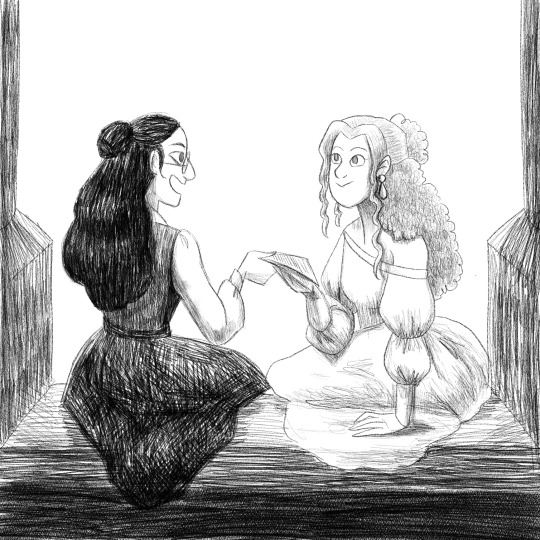
Mina and Lucy gossiping while Jonathan has the worst time of this life lol 📝🦇
[Image description: a black and white drawing of Mina Harker and Lucy Westerna from Dracula. They are seated on a bench facing each other. Mina is saying something and is showing Lucy some letters. Lucy is reaching out for the papers while smiling back at Mina. End image description].
351 notes - Posted May 26, 2022
#4
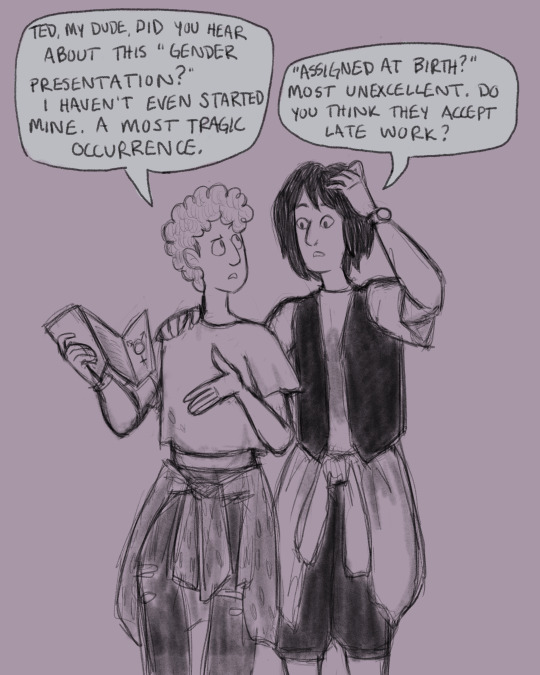
Bill n Ted :)
[ID: A sketchy drawing of Bill and Ted from "Bill and Ted's Excellent Adventure." It is a greyscale drawing in front of a light purple background. Bill is in the front and is holding a pamphlet with a transgender symbol on it. He is looking behind him at Ted with a puzzled look on his face. Ted is resting one hand on Bill's shoulder and is scratching his head in confusion with the other. A speech bubble from Bill reads, "Ted, my dude, did you hear about this 'gender presentation?' I haven't even started mine. A most tragic occurrence." A second speech bubble from Ted reads, "'Assigned at birth?' Most unexcellent. Do you think they accept late work?" End ID].
640 notes - Posted August 11, 2022
#3

Bashir and Data! My besties! 💞
[Image description: a drawing of Julian Bashir and Data from Star Trek. They are drawn from the waist up in front of a yellow background They are both wearing their respective Starfleet uniforms and are looking at each other. Julian is smiling slightly and Data is more neutral. There are a few short, orange lines radiating off of each of their heads. End image description].
696 notes - Posted April 27, 2022
#2

happy narumitsu week! i saw this headline about the former japanese princess and her husband and said well that is absolutely phoenix and miles lol
[original headline and ID under the cut]

[Image description: two pictures of a news article. The first one is a drawing parodying the second but featuring Phoenix Wright and Miles Edgeworth.
The first picture is a drawing of a news article with the headline, "Head Prosecutor Miles Edgeworth looks loved-up as he strolls hand-in-hand with disgraced former defense attorney boyfriend in LA after he failed bar exam for the second time." Below the headline are two drawing of Miles and Phoenix. The left picture features Miles, walking alone and carrying a grocery bag while looking at his phone. The second picture is of both Miles and Phoenix. They are walking while holding hands, Miles carrying the groceries while Phoenix talks animatedly. There is a caption below the pictures which reads, "Head Prosecutor Miled Edgeworth, 30, was spotted out and about with his disbarred partner, Phoenix Wright, also 30, in Los Angeles.
The second picture is a screenshot of the original article which is headlined, "Former Japanese Princess Mako Komuro looks loved-up as she strolls hand-in-hand with commoner husband in NYC after he failed bar exam for the second time." There are two photos below the headline, the left image is that of Mako Komuro, walking alone carrying a shopping bag. The right image is that of her with her husband. They are holding hands and walking together. The pictures are captioned, "Japanese Princess Mako Komuro, 30, was spotted out and about wither her commoner husband, Kei Komuro, also 30, in New York City. End image description.]
1,481 notes - Posted July 4, 2022
My #1 post of 2022
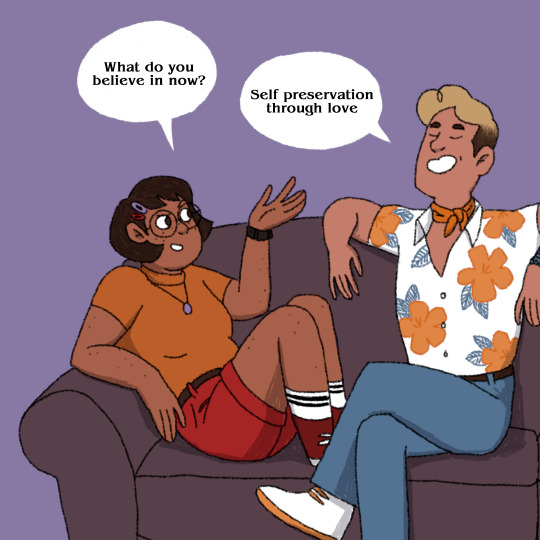

See the full post
7,826 notes - Posted February 16, 2022
Get your Tumblr 2022 Year in Review →
#tumblr2022#year in review#my 2022 tumblr year in review#your tumblr year in review#i cant believe meme wrightworth and the scooby gang were my top posts aaaa
9 notes
·
View notes
Text
Tash Sultana and the healing power of music
I chose to talk about Tash Sultana, a singer, and self-taught multi-instrumentalist, for my final project. First of all, throughout my work, I will make sure to respect Tash Sultana’s choice of pronouns and will be referring to them as a They/them. Then, as there is much to say about their talent, I will try to focus on their relation with music as a passion, but more exactly, as a healing process. Sultana’s talent has allowed them to find their own place in a society in which they felt they didn’t fit. In relation to that, I will also discuss to what extent their work can be categorised as psychedelic rock, a counter culture which emerged in the 1960s.
YOUTUBE VIDEOS:
Tash Sultana - Mystik (Live on The Sound - 6th Dec 2020) - https://www.youtube.com/watch?v=798Usgu_PAc
youtube
Finding a place through music | Tash Sultana | TEDxUniMelb https://www.youtube.com/watch?v=nOHVw_qktoM
Tash Sultana - Crop Circles (MTV Unplugged, Live In Melbourne) - https://www.youtube.com/watch?v=0wH7wcPIBgM&t=351s
TASH SULTANA - JUNGLE (LIVE BEDROOM RECORDING) - https://www.youtube.com/watch?v=Vn8phH0k5HI&list=RDEMu3H_uxPjzcjdKpi5Hd0Ivg&index=2
Inside Flow State - https://www.youtube.com/watch?v=RwFUQCITCzM
Tash Sultana - A Conversation - https://youtu.be/7xaaQ6reqyQ
ALBUM COVERS:
NOTION, 2016
FLOW STATE, 2018
TERRA FIRMA, 2020
IG POSTS: https://www.instagram.com/p/B_573R3jr09/?utm_source=ig_web_copy_link
instagram
ARTICLES:
https://www.abc.net.au/triplej/news/tash-sultana-feature-album-terra-firma/13193434
Tash Sultana Is Finally On Solid Ground - https://junkee.com/longform/tash-sultana-profile-terra-firma
Tash Sultana on new music and inviting more people on stage - https://www.abc.net.au/triplej/programs/drive/tash-sultana/10971540
Hetland, Lois. “Listening to Music Enhances Spatial-Temporal Reasoning: Evidence for the ‘Mozart Effect.’” Journal of Aesthetic Education, vol. 34, no. 3/4, 2000, pp. 105–48. JSTOR, https://doi.org/10.2307/3333640. Accessed 13 Nov. 2022.
Russell L. Johnson. “‘Disease Is Unrhythmical’: Jazz, Health, and Disability in 1920s America.” Health and History, vol. 13, no. 2, 2011, pp. 13–42. JSTOR, https://doi.org/10.5401/healthhist.13.2.0013. Accessed 13 Nov. 2022.
Duncan, Russell. “The Summer of Love and Protest: Transatlantic Counterculture in the 1960s.” The Transatlantic Sixties: Europe and the United States in the Counterculture Decade, edited by Grzegorz Kosc et al., Transcript Verlag, 2013, pp. 144–73. JSTOR, http://www.jstor.org/stable/j.ctv1wxt2b.9. Accessed 13 Nov. 2022.
Whiteley, Sheila. “Progressive Rock and Psychedelic Coding in the Work of Jimi Hendrix.” Popular Music, vol. 9, no. 1, 1990, pp. 37–60. JSTOR, http://www.jstor.org/stable/852882. Accessed 13 Nov. 2022.
7 notes
·
View notes
Text

I posted 724 times in 2022
That's 433 more posts than 2021!
153 posts created (21%)
571 posts reblogged (79%)
Blogs I reblogged the most:
@dingdongyouarewrong
@wtylas
@pointnclick
@tiddy-socks
@mens-rights-activia
I tagged 351 of my posts in 2022
#marvel - 42 posts
#young avengers - 40 posts
#marvel comics - 39 posts
#tommy shepherd - 26 posts
#art - 22 posts
#billy kaplan - 21 posts
#my art - 21 posts
#digital art - 21 posts
#heartstopper - 20 posts
#marvel 616 - 20 posts
Longest Tag: 139 characters
#my friend didnt even want to read it but their token straight friend recommended it to them and ig platonic love can make u do crazy things
My Top Posts in 2022:
#5
happy mother's day to rebecca kaplan who housed FIVE young boys at one point, three of which were her actual sons, as well as as her son's boyfriend who would later become her son-in-law, and her son's long lost twin brother who isn't technically her son but I'm sure she treated him like one.
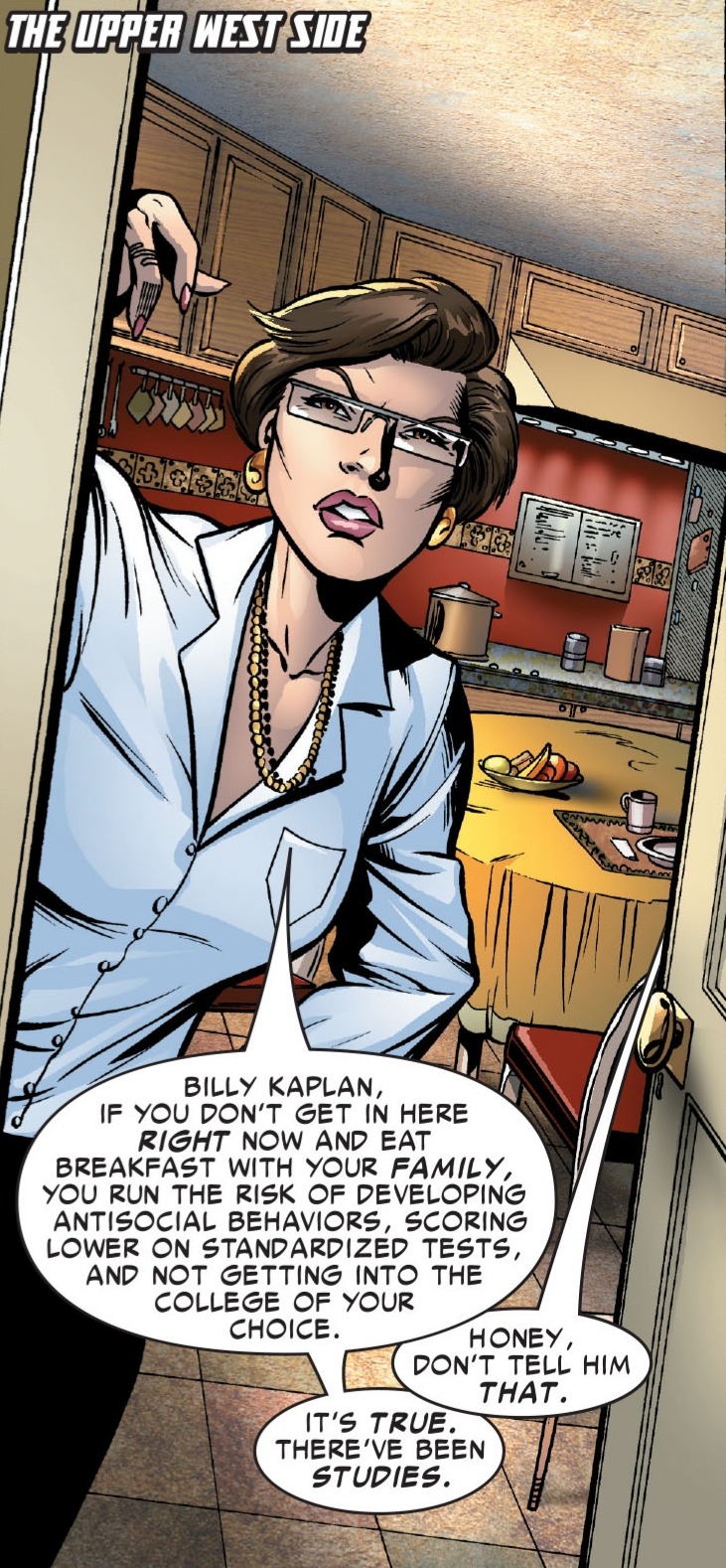

See the full post
530 notes - Posted May 8, 2022
#4
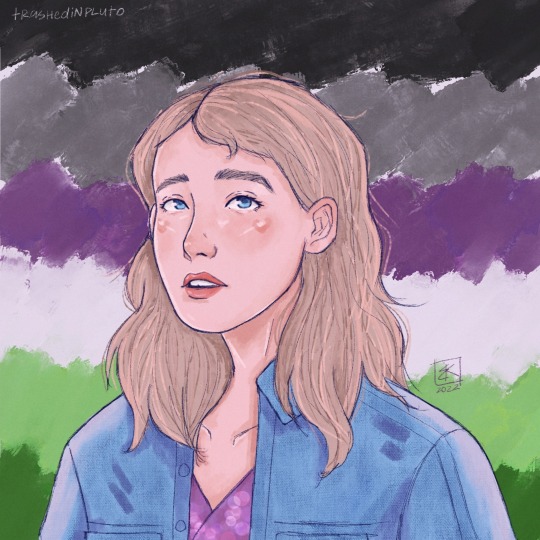
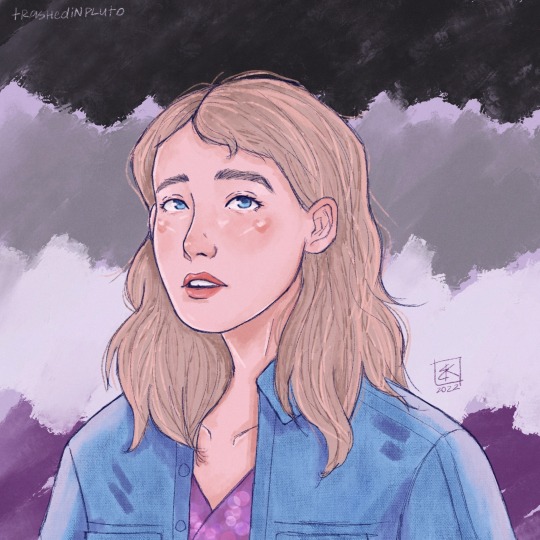
See the full post
763 notes - Posted October 26, 2022
#3

pov ur boyfriend may or may not have named his cat after his favorite article of clothing
aka taoelle and bean the cat <333
[id in alt text]
1,688 notes - Posted November 29, 2022
#2


See the full post
1,741 notes - Posted October 29, 2022
My #1 post of 2022

the tori spring asexual agenda is so real bc at any given moment she's just sipping her diet lemonade while her brother gay panics over a boy she knows likes him back
5,456 notes - Posted October 27, 2022
Get your Tumblr 2022 Year in Review →
6 notes
·
View notes
Note
Good morning Dr.Reames.
In Wikipedia, the first line about Thessalonike says she was 3 or 4 years younger than Alexander, but on the same page, it says when Alexander died, she was 21, which means she was 11 or 12 years younger. And about Cassander, Wikipedia says he was one year younger than Alexander, but in most depiction he seems to be older, and Britannica says he was 2 years older. Same for Perdiccas, Wikipedia says he was born in 355BC, but Britannica say 365BC, other pages mention 360BC. Leonnatus has two dates of birth, 356BC and 358BC.
This makes me wonder are the years of birth of these people really accurate? Wikipedia And I am curious which sources are more reliable.
We don’t have a certain year of birth for any of Alexander’s siblings except Europa, and that only because she was a newborn when Philip died in 336. Every other year of birth is a guess; often a pretty solid one, but a guess. So, we think Kleopatra, his full sister, was born about 1.5-2 years after he was, but it’s not anywhere stated. For all we know, she could have been 3-4 years younger. She was of age to marry in 336, which means only that she would have been born by at least 351/0. In his final two years, Philip married off both of his older daughters: Kynanne to her cousin Amyntas (who, himself, was only in his early 20s, being called an “infant” when his father died in 359), and then Kleopatra.
Do not give any credence to the silly story of Philip being turned off Olympias because he found her sleeping with a snake. The tale was introduced later to provide fodder for Alexander’s “son of a god” status. Olympias no doubt kept snakes for her rites, but Plutarch relates the story in his list of omens surrounding ATG’s birth. In Dancing with the Lion, she’s over 2 years younger than her brother.
We have similar issues with Arrhidaios. He was about Alexader’s age, but we’re unsure whether slightly older or slightly younger. It depends on when Philip married his mother. I chose to make him older in the novel, but only because it served my narrative purposes. In truth, I suspect he was a year or so younger. Kyanne was the eldest, and probably born in 358/57-ish, so even she is only 1-2 years older than Alexander. Remember, Philip married his first 5 wives in his first 5 years of rule (with the possible exception of Nikesepolis, discussed below).
Thessalonike presents a specific problem because her name means “Victory in Thessaly.” That gives us two possible range dates for her birth. The first would have been after 353/2, the victory at Crocus Field and his resettlement of Thessaly into tetrarchies. This is also likely when he married both Thessalian wives: Philina from Larissa (Arrhidaios’s mother) and Nikesepolis from Pherae (Thessalonike’s mother). Yet that doesn’t necessarily mean Thessalonike was born on the heels of a marriage. If she were, her birth year is more likely 351, or late in 352.
The Third Sacred War continued after the Battle of Crocus Field—for quite a few years. Philip imposed a permanent peace on the region in 346/5. So, there’s another possible date for a girl with the name “Victory in Thessaly”: after 345.
In Dancing with the Lion, I went with the earlier date because I wanted all the siblings to be roughly the same age range, to have grown up together. Beth Carney favors the later date, as that was a solid/final victory. The real question is whether Nikesepolis was married at the same time as Philina of Larissa (Arrhidaios’s mother). I think she was, and if I remember right, Beth does as well (and I believe changed her mind). But it’s possible that Nikesepolis was married later, in 346/5, making Thessalonike’s birth no earlier than 344—in which case she would not have known Alexander well (or likely Kleopatra, who was married in 456 and left for Epiros). As stated, I didn’t want that, so I went with the higher chronology.
Whoever wrote the Wikipedia article on Thessalonike cannot, apparently, do math. 353/2 is given as her birth year…which is only 3 years after Alexander’s in 356. Yet the same paragraph says she was born when Alexander was studying with Aristotle, was only 6-7 when he left, and only 21 when he died. Clearly the author confused the two potential birth periods, and failed to notice the dates didn’t match. Also, just to be completely clear, nowhere in the ancient sources is it stated that Olympias raised her, but as she was in Olympias’s party when Kassandros captured them at Pydna, it’s assumed Olympias did. (That assumption goes all the way back to Berve’s early prosopography in the 1920s, Das Alexanderreich auf prosopographischer Grundlage.)
Yet this is the eternal problem with Wikipedia. People get on there and write things when they don’t know the material well, don’t understand the nuances of the problem, don’t cite where they get their information…and apparently can’t even use a calculator.
As for the others you mentioned, Kassandros was younger than Alexander by a few years. Seleukos was about the same age, as were Leonnatos and Perdikkas. But remember, the Greeks didn’t celebrate birthdays, and for many of Alexander’s inner circle, we only have a birth year if they survived ATG and went on to become kings in their own right. But for a number of important figures around Alexander, we must guess at their ages: Krateros, Philotas, Harpalos, Kleitos, Nikanor, Erigyios, Nearchos, etc. We know Parmenion only because we’re told he was 70 when he was murdered by ATG in 330. He was a contemporary of Antipatros, so again, older than Philip by more than a decade. We know Antipatros's age because it's given on the Marmor Parium (an important inscription with an eclectic collection of dates.)
In fiction, we do sometimes play with ages to suit the story. In my author’s note, I explained that I altered several on purpose, to limit the number of names floating about. I could introduce early people who would matter later. So Erigyios, for instance, was not even close to ATG’s age, but probably 20+ years older. I stuck closer to real ages with Ptolemy and Philotas, but even so, we have no birth year for Philotas. We do know the youngest of Parmenion’s sons, Hektor, was younger than Alexander, but enough of a contemporary to be a coeval/attend school with him. We think Philotas was probably about the same age as Alexander’s cousin, Amyntas, something that suited me well in the novel.
(Article mentioned is E. Carney, “The Sisters of Alexander the Great: Royal Relics,” Historia 37.4 (1988): 385-404.)
#asks#thessalonike#thessalonice#Alexander the Great#Kleopatra of Macedon#ages of Alexander's friends#Nikesepolis#Olympias#Third Sacred War#Philip II's wives#Philip II's children#Classics#ancient Macedonia#tagamemnon#Dancing with the Lion#DwtL
7 notes
·
View notes
Text
This day in history
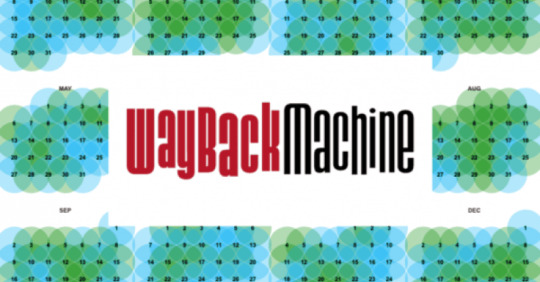
#20yrsago Category Management: retail trendiness or criminal anti-trust? https://web.archive.org/web/20030207054524/http://www.business2.com/articles/mag/print/0,1643,46334,00.html
#20yrsago Finnish recording industry demands royalties for kindergarten singing https://web.archive.org/web/20030207180706/http://www.infoanarchy.org/story/2003/1/29/02755/7928
#15yrsago Tipping-point skeptic says that super-Influencers are overrated https://www.fastcompany.com/641124/tipping-point-toast
#15yrsago SFWA European Hall of Fame: a chance to read sf from outside of the Anglo Bubble https://memex.craphound.com/2008/01/28/sfwa-european-hall-of-fame-a-chance-to-read-sf-from-outside-of-the-anglo-bubble/
#10yrsago Jonathan Coulton responds to Fox/Glee’s plagiarism of his song by “covering” it and making rival version available for sale https://web.archive.org/web/20130122033150/https://kotaku.com/jonathan-coulton
#10yrsago Aaron Swartz’s San Francisco memorial will make you stand up and salute https://archive.org/details/AaronSwartzMemorialAtTheInternetArchive
#5yrsago New York Times profiles a sleazy Twitter follower-farm, the sleazy serial liar who made millions on it, and the celebs, politicians, sports figures and “influencers” who paid him https://www.nytimes.com/interactive/2018/01/27/technology/social-media-bots.html
#5yrsago One quarter of New Orleans’ catch-basins were clogged to uselessness with 93,000 lbs of plastic Mardi Gras beads https://www.nola.com/news/politics/46-tons-of-mardi-gras-beads-found-in-clogged-catch-basins/article_37e0ff53-894c-5aed-b4c3-129852582269.html
#5yrsago A 1×1 tracking pixel was used as evidence of treason against 30,000 Turks, sent tens of thousands to jail https://www.cbc.ca/news/world/terrifying-how-a-single-line-of-computer-code-put-thousands-of-innocent-turks-in-jail-1.4495021
#5yrsago Academic audit of HUD budget finds $351 million in unaccounted-for spending since 1998 https://msutoday.msu.edu/news/2017/msu-scholars-find-21-trillion-in-unauthorized-government-spending-defense-department-to-conduct
#5yrsago Majority of Democrats now hold favorable views of mass-murdering simpleton George W Bush https://news.libertasbella.com/story/libertas-bella-news-acquires-the-anti-media/
#5yrsago Scott Walker is terrified that Democrats will win special elections to fill vacant seats, so he’s leaving thousands of Wisconsinites without state reps https://web.archive.org/web/20180901000000*/https://www.thenation.com/article/scott-walker-is-literally-preventing-wisconsinites-from-voting/
#1yrago California’s chance for universal health care https://pluralistic.net/2022/01/28/american-exceptionalism/#ab-1400
3 notes
·
View notes
Text
A thread on Hindi imposition debate. #HindiDiwas
At the time of India’s Independence, Hindi was still a language in the making. The geographical reach of Hindi was not bigger than that of Telugu or Bengali. Hindi was not the mother tongue of people in Awadh, Braj, Mithila, Magadh, Bundelkhand, Ahirwal, Nimad, Marwar or Mewar.
In these areas, each language is unique and it is not easy for a Maithil person to understand Bundelkhandi or Brajbhasa.
As Hindi was not standardised in 1947, the government tasked the Central Hindi Directorate to do so.
After much deliberation, it was decided to use roman numerical. It is still not settled whether to use Persian/Arabic/Turkic words in Hindi or not and what is better, Sanskritised Hindi or Hindustani.
Echoing this sentiment, former CM of Madras Presidency and Rajya Sabha member P. Subbarayan presented a dissent note to the 1st Official Language Commission.
Subbarayan said “People who possess as their mother tongues well formed languages with a continuous literary history of over thousand years and more like Bengali, Assamese, Oriya, Marathi, Gujarati, Telugu, Tamil, Kannada and Punjabi feel very difficult about accepting this new policy about official language, particularly when by direct and indirect means, it is attempted to be forced upon them.”
Hindi was given priority over other languages in the Constitution.
Article 351 says, “It shall be the duty of the Union to promote the spread of the Hindi language, to develop it so that it may serve as a medium of expression for all the elements of the composite culture of India and to secure its enrichment by assimilating without interfering with its genius, the forms, style and expressions used in Hindustani and in the other languages of India specified in the Eighth Schedule, and by drawing, wherever necessary or desirable, for its vocabulary, primarily on Sanskrit and secondarily on other languages.”
This idea of making Hindi “a medium of expression for all the elements of the composite cultures of India” is flawed and deeply contested. Hindi was accorded this coveted position by the Constituent Assembly and not by Parliament consisting of elected representatives.
North Indian Hindi-speaking members of the Congress party in the Constituent Assembly insisted that Hindi was accepted as the Official Language of the Indian Union.
In the post-Independence era, Hindi grew but the growth was not organic. The Union government spent money to promote Hindi especially in non-Hindi-speaking areas so that it may be accepted as the link language nationally.
The Department of Official language was given specific task that involved “co-ordination in all matters relating to the progressive use of Hindi as the Official Language of the Union, including administrative terminology, syllabi, textbooks, training courses and equipments.
There is a Hindi training programme in place for central government employees since 1955.
The presidential order dated 27 April 1960 said “in-service training in Hindi may be made obligatory for Central Government employees who are aged less than 45 years.
The Union government is running these programmes across the country. In government departments across India, Hindi Day is celebrated and essay and typing competitions are held. Government rewards good performers in these competitions.
There is an Official Language Wing in the law ministry, which translates all government bills in Hindi. At the same time, no incentive is given to Hindi-speaking employees for learning other Indian languages.
In the field of education, the 1st Official Language Commission had put much emphasis on introduction of Hindi as compulsory subject in secondary schools in all non-Hindi areas, so that the next generation of Indians may be Hindi-knowing, It brushed aside the suggestion that students in Hindi-speaking areas in secondary schools should compulsorily learn another Indian language.
The Commission instead suggested that options for these students should include languages like Sanskrit, French, German, and Russian.
This was the mainstream idea related to the language policy just after the Independence that non-Hindi students must learn Hindi, but Hindi students should study Sanskrit or some foreign language.
Mass media also played a crucial role in the proliferation of Hindi. Until the 1990s, the Union government was in sole control of radio and television. Television broadcasting started in 1965 and till the mid-1990s, most of the programming was in Hindi.
Only after regional stations were established that things started to change. But by that time, the foundation had already been laid. During 1983-1991, many popular programmes and serials were launched in Hindi.
Mythological serials like Ramayana and Mahabharata became powerful vehicles to carry Hindi with the religious massaging.
2 notes
·
View notes
Text
Football, National 1 : FC Sochaux-Montbéliard 2-1 Niort

FC Sochaux-Montbéliard 2-1 Niort en 30ème journée de National 1 saison 2023-2024 ce lundi 22 avril 2024 au Stade Bonal de Montbéliard où 11 351 spectateurs étaient présents. Buts de Zohi (Sochaux) à la 6ème minute, Lecolier (Sochaux) à la 24ème, Zemzemi (Niort) à la 67ème. A l’issue de ce match, le FC Sochaux-Montbéliard est 7ème de National 1.
Read the full article
0 notes